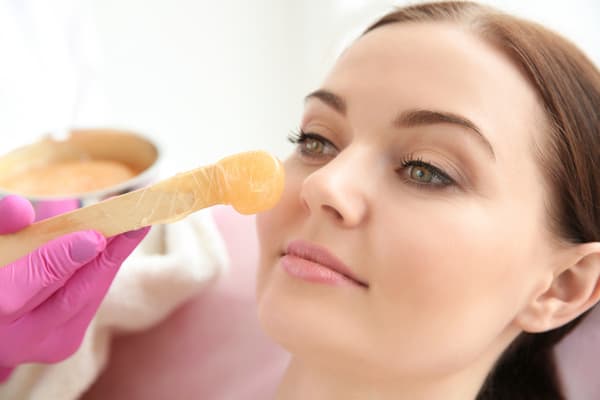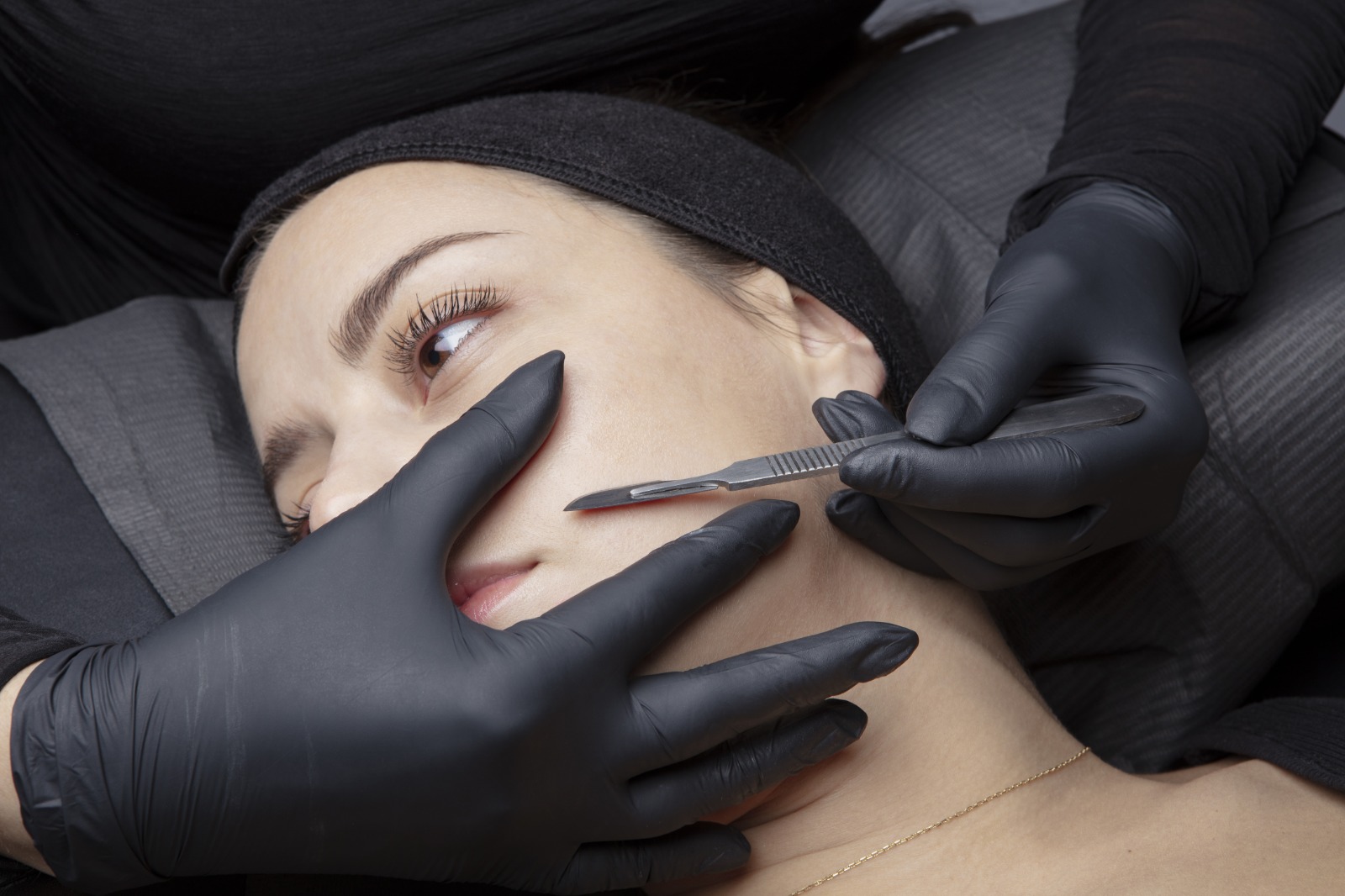Ways to remove facial hair
💟BYE-BYE FACIAL HAIR💟
There are several methods available for removing facial hair, each with its own advantages and considerations. Here are some common ways to remove facial hair:
1. Shaving:
Shaving is a popular and straightforward method for removing facial hair. It involves using a razor to cut the hair at the skin's surface. There are different types of razors available, including manual razors (with disposable or replaceable blades) and electric razors.
Here's a step-by-step guide to shaving:
- Wet your face with warm water or take a warm shower beforehand. This helps to soften the hair and open up the pores.
- Apply a shaving cream, gel, or foam to the area you want to shave. These products create a protective barrier between the razor and your skin, reducing friction and irritation.
- Hold the razor at a slight angle (about 30 degrees) and shave in the direction of hair growth. Short, gentle strokes are recommended.
- Rinse the razor frequently to remove hair and shaving cream buildup.
- After shaving, rinse your face with cool water to close the pores, and pat it dry with a clean towel.
- Apply a moisturizer or aftershave lotion to soothe the skin.
It's important to note that shaving only provides temporary results, as the hair will grow back within a few days. Some people may experience skin irritation, razor burn, or ingrown hair. Using a clean and sharp razor, replacing blades regularly, and using gentle pressure can help minimize these issues.
2. Waxing:
Waxing is a method that removes hair from the roots, providing longer-lasting results compared to shaving. It involves applying a thin layer of warm wax to the skin, which adheres to the hair. A cloth strip is then pressed onto the wax and quickly pulled off in the opposite direction of hair growth, removing the hair along with the wax.
Here's an overview of the process:
- Cleanse your face and ensure it's dry before waxing.
- Heat the wax according to the instructions provided. There are different types of wax available, such as hot wax, warm wax, and pre-waxed strips.
- Apply the wax to the desired area using a spatula or roll-on applicator, following the hair growth pattern.
- Place a cloth or paper strip on top of the wax and press it down firmly.
- Hold the skin taut and quickly pull off the strip in the opposite direction of hair growth, keeping it close to the skin.
- Repeat the process until you have removed all the desired hair.
- Afterward, you can apply a soothing lotion or oil to calm the skin.
Waxing can be uncomfortable or slightly painful, particularly for those with sensitive skin. It may cause temporary redness, irritation, or small bumps. Waxing typically provides results that last for a few weeks, as the hair needs to grow back from the follicles.
3. Depilatory Creams:
Depilatory creams are topical products that break down the hair's protein structure, allowing it to be easily wiped away. They are available in various formulations, such as creams, gels, or lotions.
Here's how to use them:
- Read the instructions and perform a patch test on a small area of skin to check for any allergic reactions.
- Cleanse your face and make sure it's dry before applying the depilatory cream.
- Apply a thick, even layer of the cream to the area with unwanted hair.
- Leave the cream on for the recommended time (usually a few minutes), but avoid exceeding the specified duration.
- Use a spatula or damp cloth to remove the cream and hair in gentle, sweeping motions.
- Rinse your face thoroughly with water to remove any remaining residue.
- Apply a moisturizer to hydrate the skin.
Depilatory creams provide results that last longer than shaving, usually for a week or so. However, the hair will grow back as new hair follicles emerge. Some people may experience a mild chemical odor during the application process, and the creams may cause skin irritation or allergic reactions in some individuals. It's essential to carefully follow the instructions and choose a product specifically formulated for facial use.
4. Threading:
Threading is an ancient hair removal technique originating from the Middle East and South Asia. It involves using a twisted cotton thread to trap and remove hair at the follicle level.
Here's an overview of the process:
- Hold one end of the cotton thread in each hand and twist it several times in the middle to create a twisted section.
- Position the twisted section of the thread against the area with unwanted hair, specifically targeting individual hairs or small patches.
- Quickly and skillfully move your hands back and forth, opening and closing the thread while rolling it over the skin. This action catches the hair in the thread and pulls it out from the root.
- Repeat the process until you have removed all the desired hair.
- After threading, you can apply a soothing lotion or aloe vera gel to calm the skin.
Threading is known for its precision, as it can remove multiple hairs at once. It's often performed by professionals at salons or threading centers, but there are also self-threading kits available for home use. Threading can cause mild discomfort or a stinging sensation, and it may result in temporary redness or skin irritation. Regular threading sessions are necessary to maintain hair-free areas, as the hair will grow back over time.
5. Laser Hair Removal:
Laser hair removal is a semi-permanent method that uses concentrated beams of light to target and destroy hair follicles. It is typically performed by trained professionals at specialized clinics.
Here's an overview of the process:
- Before the procedure, the area to be treated is cleansed, and a cooling gel or numbing cream may be applied to minimize discomfort.
- A handheld laser device is then used to emit pulses of laser light onto the skin. The light is absorbed by the pigment (melanin) in the hair follicles, damaging them and inhibiting future hair growth.
- Multiple laser sessions are required, usually spaced several weeks apart, to target hair in different stages of growth.
- After each session, you may experience temporary redness, swelling, or slight discomfort in the treated area. Applying a cool compress or soothing cream can help alleviate these effects.
- Over time, hair growth in the treated area should become noticeably reduced. However, occasional maintenance sessions may be needed to address any regrowth.
Laser hair removal is more effective on darker hair and lighter skin tones because the contrast helps the laser target the hair follicles more precisely. It may not be suitable for very light, white, or gray hair. Laser treatments can be costly, and the number of sessions required depends on factors such as hair color, thickness, and the treated area's size. Consulting with a professional is essential to determine the best course of treatment and manage any potential risks or side effects.
6. Electrolysis:
Electrolysis is a permanent hair removal method that uses a tiny probe inserted into each hair follicle to deliver an electrical current. The current damages the hair root, preventing regrowth. Electrolysis can be performed by a licensed electrologist.
Here's an overview of the process:
- The area to be treated is cleansed, and a fine, sterile needle (or probe) is inserted into each individual hair follicle.
- A small electrical current is applied through the needle, which destroys the hair root and prevents future growth.
- The electrologist will repeat the process for each hair follicle until the desired area is treated.
- After the session, you may experience temporary redness, swelling, or sensitivity. Applying a soothing cream or ice pack can help alleviate any discomfort.
- Multiple electrolysis sessions are needed to target hair in different stages of growth, and the overall treatment time depends on factors like the size of the area and hair density.
Electrolysis is suitable for all hair types and skin colors, including light, white, or gray hair that laser hair removal may not effectively address. However, it is a time-consuming process as each hair follicle needs individual treatment. It may cause mild discomfort during the procedure, and the skin may appear slightly red or swollen afterward. Choosing a certified and experienced electrologist is crucial for safe and effective results.
7. Prescription Medications:
In some cases, excessive facial hair growth may be due to hormonal imbalances, such as polycystic ovary syndrome (PCOS). In these situations, a healthcare professional may prescribe medications to manage the condition and reduce hair growth. The most common medications used are oral contraceptives (birth control pills) and anti-androgens. These medications work by regulating hormone levels, particularly reducing the production of androgens (male hormones) that contribute to excessive hair growth. The dosage and duration of treatment will be determined by the healthcare provider based on individual needs and medical history. It's crucial to follow the prescribed regimen and have regular check-ups to monitor progress and address any potential side effects.
8. Dermaplaning:
Dermaplaning is a method of exfoliation and facial hair removal that involves using a sterile surgical scalpel to gently scrape off dead skin cells and vellus hair (commonly known as "peach fuzz") from the surface of the skin.
Here's an overview of the process:
- Start by cleansing the face thoroughly to remove any makeup, dirt, or oils.
- Hold the skin taut and at a 45-degree angle, gently glide a sterile scalpel over the skin in short, upward strokes.
- The scalpel's blade removes the top layer of dead skin cells and fine facial hair, revealing a smoother, brighter complexion.
- Continue the dermaplaning process on different areas of the face, being careful around sensitive areas like the eyes or any active acne breakouts.
- After dermaplaning, thoroughly cleanse the face again to remove any remaining debris.
- Apply a hydrating serum, moisturizer, or sunscreen to protect the newly exposed skin.
Dermaplaning provides immediate results, leaving the skin looking smoother and more radiant. It also enhances the absorption of skincare products and can be performed by trained professionals or estheticians. It is generally considered safe for most skin types but may not be suitable for those with active acne, sensitive skin, or certain skin conditions. Side effects are minimal but may include temporary redness, slight sensitivity, or dryness. It is recommended to have dermaplaning done every 4-6 weeks to maintain the results.
9. Epilation:
Epilation is a method of hair removal that involves removing hair directly from the root using an epilator device. Epilators are electrical devices that contain multiple tweezers that pluck the hair as they rotate or vibrate.
Here's an overview of the process:
- Ensure the area to be treated is clean and dry before starting.
- Hold the epilator at a 90-degree angle against the skin and switch it on.
- Slowly move the epilator against the direction of hair growth, allowing the tweezers to grasp and pull out the hairs.
- It is recommended to work in small sections and stretch the skin taut to make the process more efficient and less painful.
- Continue epilating until all desired hair is removed.
- Afterward, apply a soothing lotion or aloe vera gel to calm the skin.
Epilation provides longer-lasting results compared to shaving, as it removes hair from the root. The regrowth varies from person to person but typically occurs within a few weeks. Regular use of an epilator can help to reduce hair thickness and density over time. Some individuals may find the process uncomfortable or painful, especially during the first few uses, but the sensation tends to diminish with continued use. Epilators are available for various body areas, including the face, but it's important to ensure that the device is specifically designed and safe for facial use.









Comments
Post a Comment